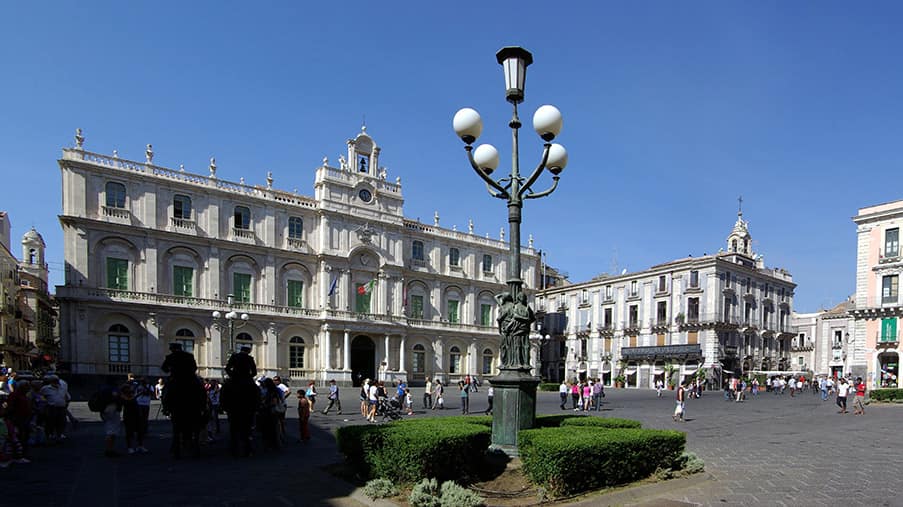
Catania, The black pearl of the Jonian sea
Catania, founded by the people of Chalcidice in 729 B.C. the bare lavic round, can be called “The black pearl of the Jonian sea“; as a matter of fact the city rises in a wonderful strip of rocky coast, where the black etnean basaltic stone shapes an high and indented cliff. During more than 2500 years, lots of time the lava flooded the city, during the Roman rule, in 122 B.C. and in 251 A.C., in 1381 and in 1669.
The lavic cliffs, that we can admire at Piazza Europa, St.Giovanni Li Cuti, The Rotolo and the port of Ognina, originated during the eruption of 1381 in form of melting stone, that deeply altered the original coast-line. The itinerary winds along the jonian coast northwards, from Catania to Acicastello. Starting from the promenade of Catania, at Piazza Europa we find a sixteenth century turret, situated on a rocky peak, originated during the eruption in 1381,which formed part of the defensive system of spin planned by the Spanish against the raids of the pirates, real nightmare on the coasting people.
Following the coast we arrive to St.Giovanni Li Cuti, where rocky peaks alternates with the “cutuli” (lavic stone blocks rounded in consequence of the effect of the sea). Going on northwards, after a few minutes walk, we can admire the ancient maritime village named St.Giovanni Li Cuti with its delightful port, which rises on a black sand beach (“rina niura” beach) crowded with hundreds of bathers in every season.
Going on northwards, we arrive to the port of Ognina, where there are hundreds of fishing-boats and sports-boats; the native fishermen gave to this port the name of “U scaru ranni” (the big call), and it is the remains of the ancient port named Ulisse, filled up by the lava flow in 1381. At the port of Ognina on the wharf every Sunday there is an open-air fish and fruit market, and thousands of the people visit it. At the top of the port we can admire a seventeenth century turret of spin, recently restored.
The Playa denomination is given to the coastal area of the Gulf of Catania, between the Jonian sea and the (road) SS.114 Orientale Sicula. The Playa is a typical low sandy beach of about 13,67 miles stretching along the north-south axis. Along the 3,11 miles of the tourist organizated beach there are 42 bathing establishments,as well as entertainment,watching and cleaning are guaranteed by 3000 employed.
Many rivers flow to the Playa,such as the Simeto and the San Leonardo and other secondary rivers such as the Aquicella, Forcile and Arci canals. At present is divided by two large falcates by the cusp of the mounth of the river Simeto. In the 1984, the mouth area of the river Simeto was declared as the Oasi del Simeto Nature Reserve by the Sicilian Regional Governement. It is, in fact, an important humid coastal area representing a strategic resting place and nesting area for the acquatic birds along the migratory routes from North Europe to Africa and vice versa.







